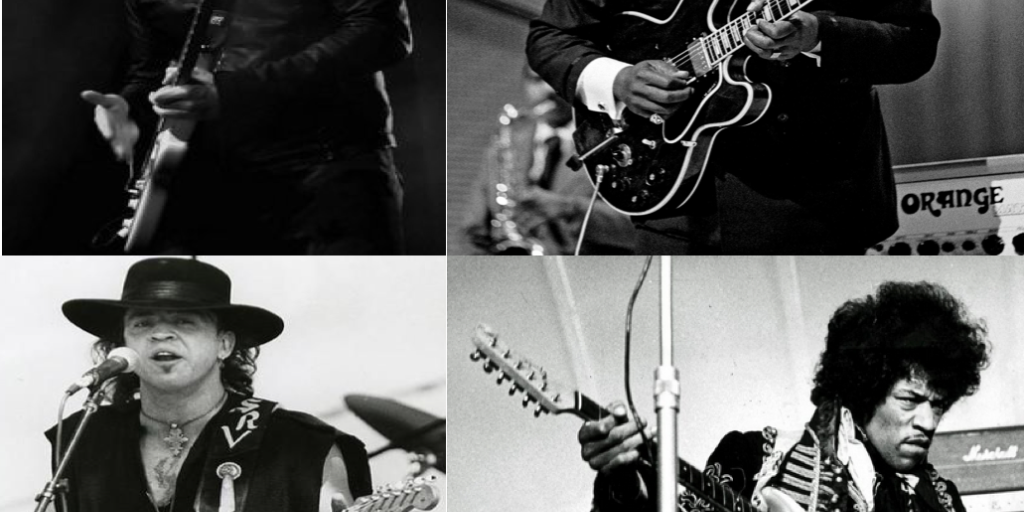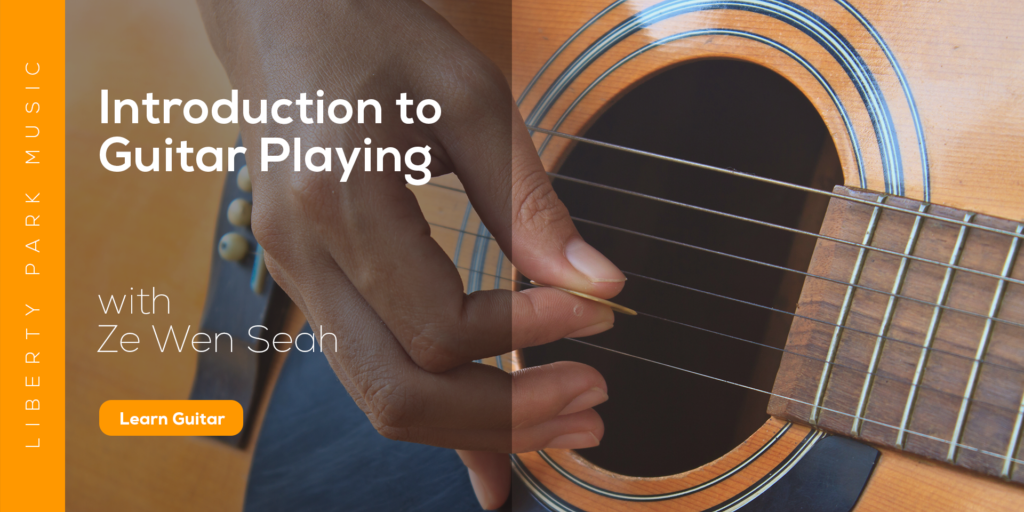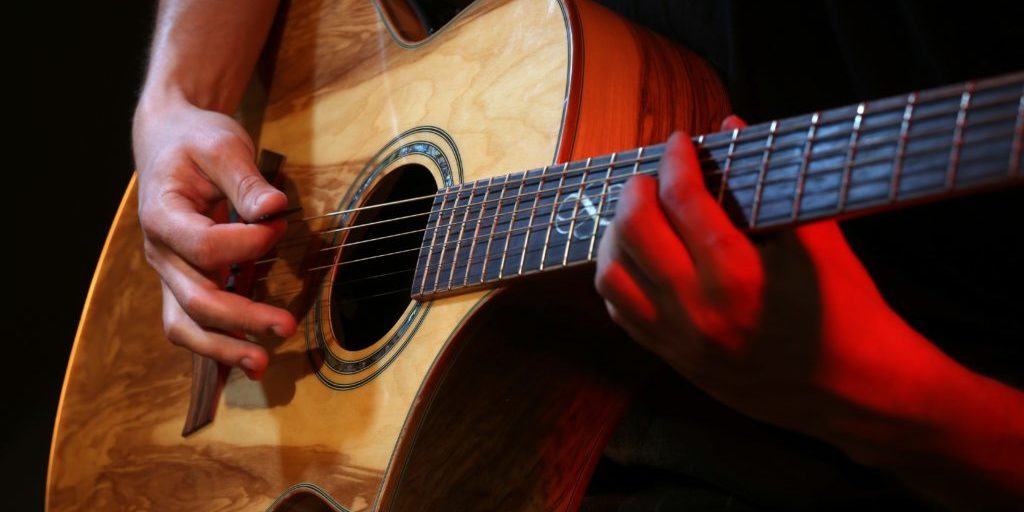
Guitarists, whether playing for fun or headlining a major festival, are known for amassing sizable collections of pedals. If you don’t have one yet, you’re probably working your way towards it! So it comes as no surprise that a guitar player like John Mayer would have a very large collection of guitar effects pedals. There are several videos on YouTube where Mayer, or his guitar tech, reveals a small chunk of his pedal collection. Mayer also occasionally shares images of his pedalboards on Instagram.
This article covers Mayer’s guitar effects pedals and at the end of the article, we recommend a number of pedals that you can use to achieve his iconic tone!
To keep things organized, we’ll categorize his pedals in ten categories: Boost, Overdrive, Distortion, Fuzz, Compressor, Delay, Reverb, Modulation, Wah, and Others.
Boost
Boost pedals are a great way to provide a volume boost for guitar solos without changing your tone. When it comes to boost pedals, Mayer really only uses two. The first is a Keeley Katana Clean Boost, which is a $169 pedal that provides a really transparent volume boost and is very simple to operate.
The second boost pedal that he uses is a Strymon OB.1, which is actually a clean boost and compressor pedal. The pedal costs $199, which is a little more expensive, but considering that it’s a 2-in-1 pedal, I’d say that’s a pretty decent price.
Overdrive
As most of you would expect, a large percentage of Mayer’s guitar pedals are overdrive pedals. Overdrive pedals are so different from one another in terms of tone and response, which is why for most guitar players, the search for a perfect overdrive pedal never really ends.
While researching Mayer’s overdrive pedals, the first pedal that really stood out from the rest was the Klon Centaur. This pedal has reached a mythical status within the guitar community for its ability to go from a transparent overdrive to full on distortion, all while maintaining a warm and pleasant tone. However, unlike the other pedals I will mention in this article, the Klon Centaur isn’t easy to obtain. It has been out of production for more than 20 years and the units on the second hand market begin at an insane $1,500. Thankfully, there are many companies out there that have made clones of the Klon Centaur that sound really close to the original pedal. A few good alternatives to check out are the Paul Cochrane Timmy, JHS Morning Glory, and EHX Soul Food.
While the Klon is known to be a transparent overdrive, meaning that it doesn’t color your tone much when engaged, there are times where you’d like to have an overdrive with a mid-range bump to help push your guitar through the mix. This is where the Tube Screamer series of pedals from Ibanez excel. Mayer is known to have played through the TS808, TS9, and TS10 in order to get that “Stevie Ray Vaughan” style of overdrive. Ibanez Tube Screamers are also relatively inexpensive, beginning at $100 for a brand new unit.
Another Tube Screamer style overdrive that Mayer is known to use is a Fulltone Fulldrive 2. This pedal provides the same mid-range bump to your overdrive tone, but it also has a toggle switch that allows you to switch between two other overdrive modes. Additionally, the Fulldrive 2 also has a boost section built into the pedal, allowing you to give your overdrive an extra gain boost when you need it to cut through during a solo. The Fulldrive 2 can be bought for $109 brand new, which is a pretty good deal for a 2-in-1 pedal.
No pedal collection would be complete without the inclusion of a BOSS pedal, and for overdrives, Mayer often uses the BOSS BD-2 Blues Driver. The Blues Driver’s tone sits somewhere between being a transparent overdrive and a Tube Screamer style overdrive. It also sports BOSS’s trademark rugged design that has been road-tested by countless gigging musicians throughout the years. The Blues Driver can be easily found on the market and it retails at $100.
The last overdrive pedal we’ll be checking out is one from boutique maker JHS Pedals, and it is simply known as The Bonsai. This overdrive pedal is a Tube Screamer style overdrive pedal, but what sets it apart from the other overdrive pedals is that this pedal has nine different overdrive voicings built into it. Over the years, there have been many Tube Screamer style overdrives that have come and gone, and only a few have managed to stand the test of time and be regarded as classics. The Bonsai manages to replicate and cram the circuitry of nine classics into a single, easy to use pedal, and it retails at $229. That’s a pretty steep price for a guitar pedal, but considering the versatility of this pedal, it’s hard to argue with the price that JHS has set.
Distortion
Distortion tones aren’t something you hear very often from Mayer as it’s not a sound that is necessary for the kind of music he plays. However, there are instances where Mayer will use a distortion pedal, and from the research I’ve done online, there’s been only one distortion pedal that he’s known to use -- the MXR M104 Distortion.
The MXR M104 Distortion is a very simple, two-knob operated, distortion pedal that can also double as an overdrive. Thanks to its simplicity, it has become a really popular pedal over the years, and it’s responsible for many of the classic distortion tones from the 80’s. Like many other MXR pedals, the M104 Distortion is readily available and can be bought for $79.99 at most retail shops.
Fuzz
Fuzz pedals first became hugely popular thanks to Jimi Hendrix and his trio, The Jimi Hendrix Experience. Fuzz pedals tend to work best when there aren’t that many instrumentalists in the band as the fuzz sound takes up a lot of sonic real estate. Just like Hendrix who came before him, Mayer also uses a fuzz pedal when performing with his trio, the John Mayer Trio.
The fuzz effect that can be heard on Mayer’s recording of “Crossroads” from the Battle Studies album was reportedly achieved with a Cornish NG-2 Fuzz pedal. However, it is very hard to get your hands on one of these units, and they cost at least $700 on the secondhand market. As regular, non-celebrity figures, getting our hands on one of these is unrealistic.
A fuzz pedal that is attainable that is also used by Mayer is the Fulltone ‘69 Fuzz. The ‘69 Fuzz is a vintage-voiced fuzz pedal that cleans up really well when you roll back the volume knob on your guitar. As fuzz pedals are known to be tricky to dial in, the ‘69 Fuzz deals with this issue by providing a trim knob that can be found inside the pedal as well as two external knobs to adjust the input gain and contour. Playing around with the volume knob on your guitar also allows you to get a range of different tones that can make this pedal triple-up as an overdrive, distortion, and fuzz pedal. Like any other Fulltone pedal, the ‘69 Fuzz is really well built and it can be bought online for $151.20.
Compressor
Compressor pedals are often an essential effect to our “base” tone. For many players, their compressors are left “always-on,” and removing them from pedal boards will completely change their tone. When it comes to compressors, you don’t have to get too fancy with them, and in Mayer’s case, he’s been known to use two pedals.
The first pedal is an Analog Man Mini Bi-Comp. This pedal is a ROSS style compressor that has been tweaked and improved by the pedal builders at Analog Man. All pedals from Analog Man are hand built and made in the USA using high quality components, making them one of the most reliable pedal makers out there. In fact, Analog Man pedals tend to have great resale value as they are known to last for a very long time. Of course, they sound great as well, and the Mini Bi-Comp is no exception. As Analog Man is a boutique pedal maker and they don’t produce that many pedals a year, it may be easier to find the Mini Bi-Comp on the second hand market. They can be found on sites like Reverb.com for $200.
Another compressor that has recently surfaced on Mayer’s pedalboard is the Strymon OB.1, which I’ve already mentioned above in the “Boost” category. This pedal can be found on the pedalboard that Mayer uses for his Dead & Company shows.
Delay
Like overdrive pedals, Mayer has a large collection of delay pedals. He has a good mix of simple-to-use pedals as well as large studio-grade units. Let’s check out the simple units first.
The two delays from Way Huge that have appeared on Mayer’s pedalboard are the Aqua-Puss and Supa-Puss. The Aqua-Puss is a simple analog delay pedal capable of delays from 20ms to 300ms. Its sound is modeled after vintage analog delays and tape echoes, which means however you tweak this pedal, you’re going to end up with a warm and full tone. The Supa-Puss is like the big-brother version of the Aqua-Puss. The Supa-Puss provides the same analog delay and tape echo sounds while giving you additional adjustable parameters like note subdivision control, tap-tempo, gain and tone knobs, an LFO modulation circuit, and an expression pedal input. The Aqua-Puss can be found for $149.99, and the Supa-Puss can be found for $249.99.
Another tape echo style of delay pedal that Mayer uses is the Dunlop EP103 Echoplex. This pedal is modeled after the vintage Echoplex tape delay studio units and can provide subtle slap-back delays all the way to full lush soundscapes. The EP103 Echoplex also has an input for an additional footswitch which will give you a tap-tempo function. This pedal can be purchased for $199.99.
Mayer also uses two other tape echo style delay pedals -- the BOSS RE-20 Space Echo and T-Rex Engineering Replica Delay/Echo. When it comes to straight forward, no-nonsense analog, and tape delays, Mayer shuffles between these five pedals. The BOSS RE-20 Space Echo can be found for $259.99, while the T-Rex Engineering Replica Delay/Echo can be bought at $369.
Mayer also uses more complex delay pedals when they are needed. Many of the following units have advanced functions like the ability to save presets, stereo outputs, MIDI control, dual delays, and more.
The first pedal we’ll look at is a classic -- the Line 6 DL4. This pedal is a stereo digital delay modeler that has 16 classic delay models built in. It has a range of different tape echoes, analog delays, tube delays, and so forth. Additionally, it also has a 14-second looper built into the pedal, which will allow you to loop phrases for your practice sessions or performances. This pedal retails at $299.99.
Mayer also uses the Eventide TimeFactor Twin Delay, and while it has many of the features of the Line 6 DL4, including 9 delay models and a looper, the TimeFactor also has the unique ability to use two different delays simultaneously. This will allow you to build some pretty lush soundscapes similar to what The Edge (from U2) does. This device can save up to 100 presets, and can be used for all sorts of instruments. Some people even use it for their recording studios as the delay models are high definition, studio-grade models. Due to its high quality construction and features, the Eventide TimeFactor Twin Delay is sold at a cool $399.
The last delay unit that we’ll check out is the Strymon Timeline. The Timeline provides all of the features present in the previous pedals plus more. It comes with 12 unique sounding delays, a 30-second looper, and the ability to save 200 presets. Like the Eventide TimeFactor, the Timeline has very high quality studio-grade delay models built in. In fact, the delay models require so much computing that there is a SHARC DSP chip (the same one found in UAD audio interfaces) to handle the processing. The result is probably the best sounding delays in a compact, pedal-sized unit that can be used with any instrument in any environment. Of course, such quality will come at a price, and the Strymon Timeline retails at $449.
Reverb
When it comes to reverbs, Mayer has shown a preference to using spring reverbs built into Fender amplifiers or a stand-alone spring reverb unit like the 1963 Fender tube reverb tank.
However, when he has to rely on a pedal to get his reverb sound, Mayer goes with the Strymon Flint Tremolo and Reverb pedal. Unsurprisingly, this pedal models its sound after vintage spring reverbs and tremolos that came with many Fender amplifiers. Like any other Strymon pedal, the Flint has very high quality and convincing sounds. Its construction is also rugged, as is expected from Strymon. However, like any other Strymon pedal, the Flint comes at a steep price of $299.
Modulation
One of the reasons why Mayer is so highly regarded as a guitar player is his ability to get a wide range of sounds out of a single instrument. A lot of the unique sounds he gets can be attributed to modulation pedals.
The first few modulation pedals are classics from MXR. They are the Phase 90, EVH 90, and Phase 100. The Phase 90 is a classic phaser that started it all. It has been used by Jimmy Page, Eddie Van Halen, Dave Grohl, Billie Joe Armstrong, and of course, John Mayer. Much of its popularity lies in its simplicity. The face of the pedal only has a single knob to control the speed of the phase effect. The EVH 90 is an Eddie Van Halen signature model of the original Phase 90 with an additional switch that allows you to select between a vintage phaser or a modern phaser tone. The Phase 100 is the big brother version to both of these pedals, and it provides an additional knob that allows you to switch between four phaser sounds. The Phase 90 can be purchased for $80, the Phase 100 can be bought for $119.99, and the EVH 90 retails at $130.
One of the most memorable intros to a John Mayer song is the swelling chords in “I Don’t Trust Myself” from Continuum. That sound was accomplished using a really unique pedal known as the Roger Linn Design AdrenaLinn III. The AdrenaLinn III is a beat-synced effects processor that can also be used as a drum machine. This pedal also provides 40-amp models, which means you can plug your guitar straight into it then straight out into a PA system. The pedal can save up to 200 presets, and probably the most unique feature is its ability to beat-sync your playing with a set tempo. All you have to do is play a chord or arpeggio and allow the pedal to do its work while staying in tempo. This unique pedal can be bought for $399.
If you’re looking for a modulation pedal that can do almost anything while sounding like it belongs in a studio rack, look no further than the Strymon Mobius Modulator. We’ve already covered a couple of Strymon pedals in this article, but it should really come as no surprise as they make some of the best pedals in the market. The Mobius Modulator comes with 12 modulation machines including popular effects like a phaser, chorus, vibe, flanger, rotary, and many more. Like the previous Strymon pedals, the effects in the Mobius Modulator sound excellent. There are many additional features that come with the pedal like the ability to save 200 presets, an expression pedal input, assignable control knobs, and MIDI integration. The Mobius Modulator can be yours for a cool $449.
Wah
Wah pedals have been a staple of blues and rock music since Eric Clapton and Jimi Hendrix popularized their use in the late 60’s. The ability to add a new level of expression with a wah pedal is unparalleled and they are used by countless shredders like Steve Vai, Stevie Ray Vaughan, Eric Johnson, Joe Satriani, and John Mayer.
The wah pedal that appears most often on Mayer’s pedalboard is the Real McCoy Custom RMC8 Guitar Eqwahlyzer. This particular wah pedal is a true bypass wah pedal that features an additional equalizer circuit that will allow you to fine tune your wah sound. There is also a switch underneath the rocker that changes the sweep contour. The RMC8 can be found online for $269 which is pretty steep for a wah pedal, but most wah pedals don’t come with an additional EQ circuit, or the ability to toggle between different sweep contours.
The wah pedal that has been spotted on Mayer’s most recent pedalboard is the MXR MC404 CAE Wah. This pedal is a true-bypass wah pedal that features two different wah voices and a boost function. The boost function is activated via a side-mounted kickswitch, and while activated, it can help you boost your solos to cut through the band. The MC404 also has internal pots that adjust the Q-width of the wah effect, giving you another method of fine tuning your wah sound. The MC404 could be yours for $170.
Others
While the above mentioned pedals could easily get you Mayer’s sound, there are a couple of other pedals that provide a unique sound.
The first is the Electro-Harmonix Q-Tron Plus which is an envelope filter that is commonly (and also mistakenly) called an auto-wah. Mayer also uses other Electro-Harmonix pedals like the MicroSynth XO and POG Polyphonic Octave Generator. The MicroSynth XO is a pedal that makes your guitar sound like one of those fat vintage synthesizers, and the POG is an octaver that also makes your guitar sound like an organ. The POG is the pedal responsible for the organ sounds in Mayer’s “In Repair.” Other octavers that Mayer uses include the Tycobrahe Octavia and the BOSS OC-2 Octave.
Mayer also often uses the MXR M-108 Ten Band Graphic Equalizer which is a dedicated equalizer pedal that can be activated when you need your guitar to sound different in certain sections of a song.
One final pedal that Mayer uses that deserves mentioning is the Neunaber Slate V2. The Slate V2 is a programmable stereo pedal that can be a reverb, delay, or modulation pedal. All you have to do is plug the pedal into your computer and program it to function the way you want it to.
So… What pedals should I start with?
The information I’ve provided above may seem a little intimidating, especially when you consider how much some of these pedals may cost, so here’s a quick rundown of what could be the essential pedals to achieve Mayer’s tone.
For boost pedals, the authentic Mayer way to go would be the Keeley Katana Clean Boost. However a cheaper option that sounds really good in its own right would be the Xotic EP Booster. When it comes to overdrives, there are two types of overdrives that you’ll have to consider -- a transparent overdrive and a Tube Screamer style overdrive with a mid-boost. While Mayer uses a Klon Centaur for his transparent overdrive, that pedal is ridiculously overpriced. A few good alternatives to check out are the Paul Cochrane Timmy, JHS Morning Glory, and EHX Soul Food. For Tube Screamer style overdrives, just go ahead and look for an actual Ibanez Tube Screamer.
You could probably skip the distortion pedal as that’s not something Mayer uses very often, and maybe even skip the fuzz pedal too. However, if you do feel like getting a fuzz pedal, go for the Fulltone ‘69 Fuzz.
When it comes to compressors, stick to the Analog Man Bi-Comp, but other pedals that have similar sounds and features include the Keeley C2 2-Knob and MXR Dyna Comp.
When it comes to delay pedals, as you probably have noticed, Mayer likes to use analog and tape echo delay styles. There are many options for delays like these and the ones mentioned previously should all work well. Of course, there are also other pedal makers that make great sounding analog and tape echo delays.
When it comes to reverb, it’s simple. Go with something that will get you a spring reverb sound of a Fender amplifier. Modulation pedals are pretty simple too as the most common modulation effect that Mayer uses is a phaser. The MXR Phase 90 will do just fine, and it’s a really affordable pedal. If however, you’d like to get a specific modulated sound, for example his sound from “I Don’t Trust Myself,” then you’ll have to spend a bit more to get the specific pedal necessary for that sound.
For wah pedals, you don’t necessarily have to spend a lot on the Real McCoy Custom RMC8 Guitar Eqwahlyzer or MXR MC404 CAE Wah. The main thing you want to look out for when getting a wah pedal is to ensure that it has true bypass so the pedal won’t change your base tone. Jim Dunlop produces a large selection of wah pedals that can suit your needs.
Going down the rabbit hole of guitar pedals can be a costly exercise, so I highly suggest only getting what you feel like you’ll need. It’s easy to overspend on guitar pedals, and that’s probably the one thing that’s common amongst all guitarists. However, without guitar pedals, certain sounds are just impossible to achieve, so they are a necessary cost. Happy tone hunting!
Next: on John Mayer's influences
About the Author: Ze
Ze first began his journey playing original music and top 40s pop tunes around the country's popular venues. Eventually, through the music of John Mayer, he found a strong attraction to blues music. Ze has years of experience teaching beginners and intermediate guitarists. Currently with Liberty Park Music he is teaching Introduction to Guitar Playing for Complete Beginners, Rhythm Guitar to learn about strumming, chords and more, Guitar Essentials as a fast-track review course, and lots of Song Lessons on pop and rock hits.









Just to inform, the JHS Morning Glory and Paul Cochrane Timmy is not close to the klon centaur. Even saying that the Timmy and Morning Glory is the same would be stretching a bit, even though they’re both transparent. A klon can’t be put in the “transparent” category because it has an ever so slightly mid-boost. However, nice article and a good summary!